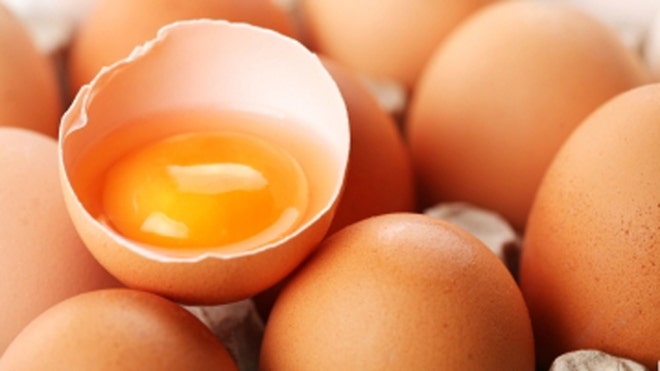
The Food and Drug Administration has issued a positive review of a breast cancer drug from Roche that could soon become the first pharmaceutical option approved for treating early-stage disease before surgery.
In documents posted online, FDA scientists said women who received the drug Perjeta as initial treatment for breast cancer were more likely to be cancer-free at the time of surgery than women who received older drug combinations. Although the results come from mid-stage trials of the drug, FDA scientists recommended accelerating approval of the drug.
That step is reserved for groundbreaking drugs to treat life-threatening diseases.
Perjeta was first approved last summer to treat women with a subtype of breast cancer that has already spread to other parts of the body. But Roche’s Genentech unit is now seeking approval to use the drug at a much earlier stage of the disease: after diagnosis and before surgery to remove the tumor.
Surgery to remove tumors is the first step in treating virtually all forms of cancer. If approved, Perjeta would be the first cancer drug approved for use as a pre-surgical step. Using cancer drugs before surgery is still experimental, but doctors hope the approach could help shrink tumors to make them easier to remove. In some breast cancer cases, a tumor that is easier to operate on could allow women to keep their breasts, rather than having them surgically removed.
On Thursday, the FDA will ask an outside panel of cancer specialists whether Perjeta’s benefits outweigh its risks for treating early-stage breast cancer. Among other questions, the experts will be asked whether the preliminary results reported by Genentech are likely to result in longer overall survival for patients. The government agency isn’t required to follow the group’s advice, though it often does.
The panel will review a 417-woman study comparing Perjeta in different combinations against older breast cancer treatments. When Perjeta was combined with Herceptin, another Genentech drug, and standard chemotherapy, 39 percent of women saw their cancer reach undetectable levels. Only 21 percent of women experienced the same results from taking Herceptin and chemotherapy alone. After drug treatment all the women received standard breast surgery to remove any cancerous tumors. Genentech says this surgery allowed researchers to confirm the presence or absence of cancer.
Last year the FDA released guidelines for studying breast cancer drugs in the pre-surgical setting, with the aim of accelerating approval of promising therapies. Perjeta is the first drug to undergo FDA review since those recommendations were released. If approved, it could encourage more drugmakers to study cancer drugs for early-stage use.
“Despite advances in systemic therapy of breast cancer, there remains a need to expedite drug development and approval of highly effective therapies for patients with high-risk early-stage breast cancer,” the FDA states in its review.
Like Herceptin, Perjeta only works in a subset of about 20 percent of breast cancer patients who have tumors that overproduce a protein known as HER-2, which makes cancer cells rapidly divide and grow.
Breast cancer is the second most deadly form of cancer in U.S. women, and is expected to kill more than 39,000 Americans this year, according to the National Cancer Institute. About 6,000 to 8,000 deaths per year are attributed to the HER-2 form of the disease.
FDA scientists stress in their review that Genentech’s results are preliminary and will have to be confirmed in future trials. The company only measured the patients’ immediate response to the drug, and did not submit follow-up data showing whether the cancer returned or whether women ultimately lived longer. But agency scientists said the company’s approach “is reasonably likely to predict clinical benefit,” and noted that Genentech is already enrolling patients in a late-stage trial that could confirm the results.
Since the early 1990s the FDA has granted accelerated approval to dozens of drugs based on promising early results, on the condition that their effectiveness is confirmed in later studies. That policy has been praised by patients with HIV, cancer and other deadly diseases where access to experimental treatments can mean life or death.
But the flipside of the program means removing drugs from the market if their initial promise isn’t confirmed by later studies. In 2011 the FDA was criticized by some cancer patients when it revoked breast cancer approval for another Genentech drug, Avastin. The FDA concluded that the drug did not help breast cancer patients live longer or bring enough other benefit to outweigh its dangerous side effects. The drug is still approved to treat colon cancer and other forms of the disease.
The FDA is scheduled to make a decision on whether to approve Perjeta for early-stage breast cancer by Oct. 31.
Source: Fox news


 According to the American Heart Association, the average American consumes approximately 16 teaspoons more added sugar than is recommended per day.
According to the American Heart Association, the average American consumes approximately 16 teaspoons more added sugar than is recommended per day. If there’s one thing I’ve learned in more than 15 years of private practice, it’s that weight management is about far more than calories in, calories out. In addition to genetics, there are dozens of patterns that day after day, week after week, influence our shapes and sizes. Many of the habits of seemingly “naturally slim” people aren’t deliberate, but you can consciously adopt them. Over time, they’ll soon become second nature, and work for you too. Here are five I notice often, and how they can lead to diet-free weight loss.
If there’s one thing I’ve learned in more than 15 years of private practice, it’s that weight management is about far more than calories in, calories out. In addition to genetics, there are dozens of patterns that day after day, week after week, influence our shapes and sizes. Many of the habits of seemingly “naturally slim” people aren’t deliberate, but you can consciously adopt them. Over time, they’ll soon become second nature, and work for you too. Here are five I notice often, and how they can lead to diet-free weight loss.
 Experts have suggested that women should aim to have children before turning 35.
Experts have suggested that women should aim to have children before turning 35.
 Researchers have created new, specific memories by direct manipulation of the brain that could help understand and potentially resolve learning and memory disorders.
Researchers have created new, specific memories by direct manipulation of the brain that could help understand and potentially resolve learning and memory disorders.